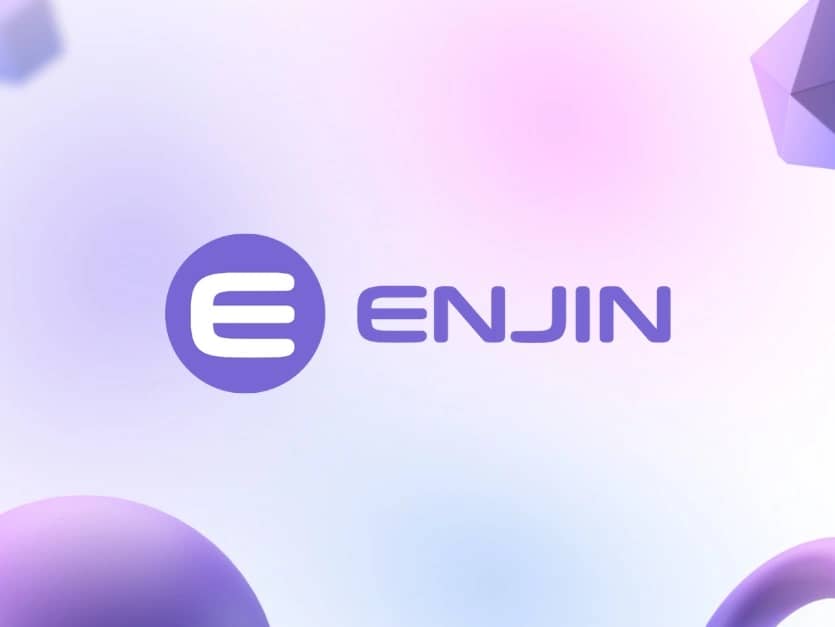위키 구독하기
Share wiki
Bookmark
Enjin
Enjin
**엔진(Enjin)**은 디지털 자산과 NFT를 위한 블록체인 플랫폼으로, 안전하고 효율적인 자산 관리를 위한 도구와 인프라를 제공합니다. 엔진 플랫폼(Enjin Platform)과 NFT.io와 같은 서비스를 통해 개발자와 사용자가 디지털 자산을 생성, 거래 및 관리할 수 있도록 지원합니다. [1]
개요
Enjin(엔진)은 게임 및 비즈니스를 위해 맞춤 제작된 블록체인 플랫폼으로, Relaychain(릴레이체인) 인프라를 활용합니다. Enjin(엔진) 생태계에는 Enjin Platform(엔진 플랫폼), NFT.io, Enjin Wallet 2.0(엔진 월렛 2.0), Beam(빔), 그리고 개발자의 수익 및 혁신을 향상시키도록 설계된 SDK 등의 도구가 포함되어 있습니다. 블록체인 SDK, API 및 자동화를 포함한 포괄적인 도구와 서비스를 통해 블록체인 게임 제작을 간소화합니다. Enjin(엔진) 생태계는 혁신적인 크라우드 펀딩 모델을 지원하고 사용자 주도의 자산 생성을 용이하게 하여 플레이어 충성도를 높이고 그레이 마켓 손실을 줄입니다. 또한 게임을 넘어 예술, 음악 및 수집품의 토큰화 및 몰입형 VR 및 AR 경험 창출을 위한 애플리케이션을 제공합니다. [2]
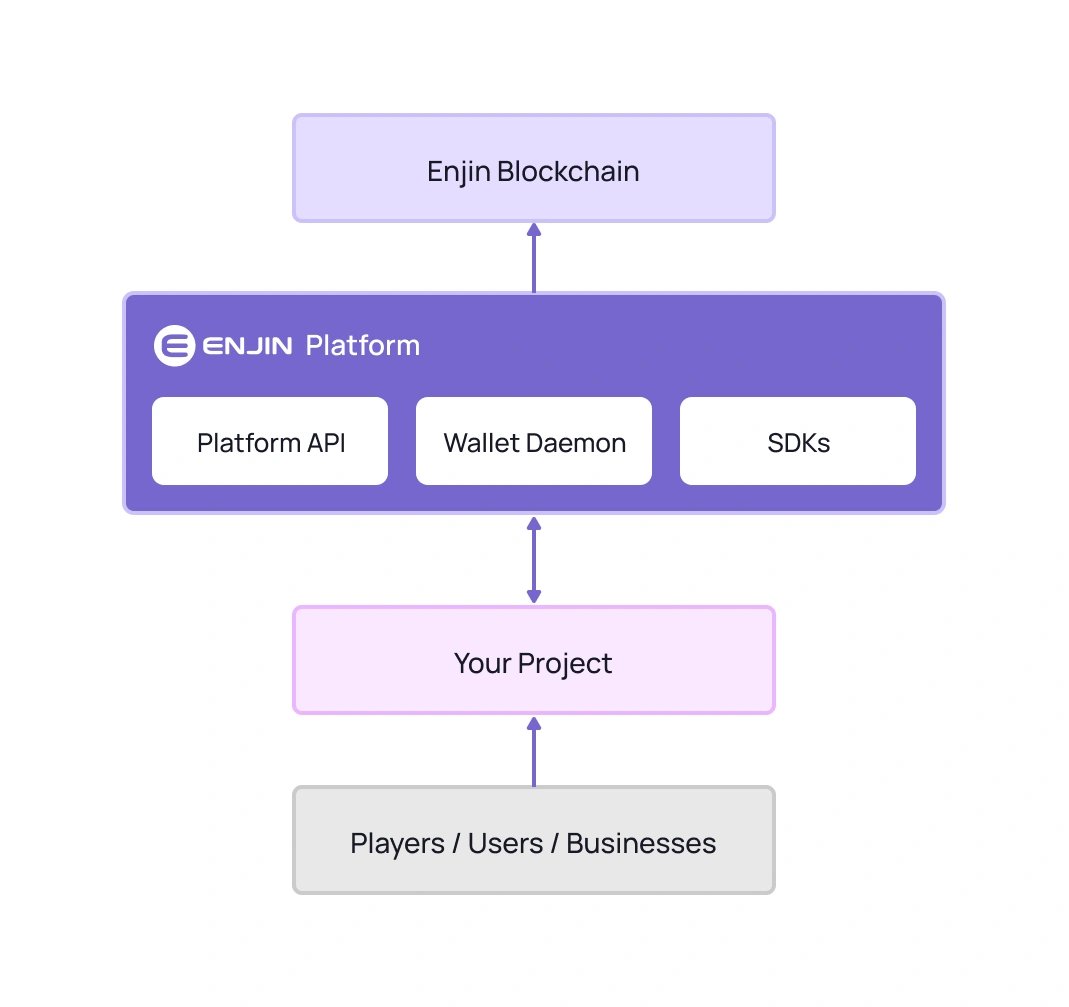
엔진 블록체인
엔진 블록체인은 위임 지분 증명(PoS) 합의 프로토콜에 의해 관리되는, 내장된 NFT 기능을 갖춘 1계층 프로토콜입니다. 확장성과 효율성을 위해 설계되었으며 초당 5,000건 이상의 트랜잭션(TPS)을 처리합니다. [3]
릴레이체인
엔진 릴레이체인은 폴카닷의 서브스트레이트 프레임워크를 기반으로 구축된 디지털 자산 및 NFT를 위한 분산형 네트워크입니다. 다중 체인 방식을 통해 병렬로 트랜잭션을 처리하여 높은 확장성을 제공하며, 트랜잭션 처리량과 성능을 향상시킵니다. 이 네트워크는 기본 릴레이 체인과 사용자 정의 가능한 매트릭스 체인으로 구성됩니다. 릴레이 체인은 보안 및 블록 검증을 담당하고, 매트릭스 체인은 속도와 비용 효율성에 중점을 두어 다양한 사용 사례에 대한 유연성을 제공합니다. 엔진의 확장성 및 비용에 대한 접근 방식은 파라체인 경매의 복잡성을 피하고 예측 가능하며 비용 효율적인 솔루션을 제공합니다. 스테이킹은 엔진 지갑의 사용자 친화적인 인터페이스를 통해 간소화되어 유동성을 저해하지 않고 노미네이션 풀에 쉽게 할당할 수 있습니다. 이 플랫폼은 네트워크 보안 및 보상에 대한 광범위한 참여를 가능하게 하여 포용성을 증진합니다. 사용자와 개발자를 위한 일관된 생태계를 조성하는 엔진 제품과 원활하게 통합됩니다. [4]
Matrixchain
엔진 Matrixchain은 누구든 노드(Node)를 운영하고 활동에 참여할 수 있는 탈중앙화되고 신뢰할 수 있는 네트워크입니다. Substrate 프레임워크를 사용하여 NFT 생태계를 위한 강력한 인프라를 제공함으로써 확장 가능하고 안전한 NFT 플랫폼을 제공하는 것을 목표로 합니다. 토큰 발행(minting) 기능과 본딩 곡선과 같은 사용자 정의 가격 기능을 사용하여 대체 가능 토큰과 대체 불가능 토큰(non-fungible tokens)을 지원합니다. 또한 거래 수수료 보조를 위한 Fuel Tanks와 토큰 상장 없이 거래를 지원하고 플랫폼 간 판매에 대한 로열티를 보장하는 온체인 마켓플레이스가 포함되어 있습니다. 사용자는 사용자 정의 스마트 계약(smart contracts)을 통해 기능을 확장할 수 있습니다. [3][5]
블록체인 노드
엔진은 각기 다른 요구 사항과 사용 사례에 맞는 세 가지 노드 유형(RPC, 콜레이터, 아카이브)을 지원합니다. 컴파일된 후에는 사용자의 필요에 따라 노드를 RPC 노드, 콜레이터 또는 아카이브 노드로 사용할 수 있습니다. [6]
RPC 노드
RPC 노드는 엔진 네트워크에 연결되며 Matrixchain에 대한 인터페이스 역할을 합니다. 일반적으로 원격 서버에 호스팅되며 RPC 또는 WS 엔드포인트를 통해 클라이언트 측 애플리케이션에서 액세스합니다. 하지만 RPC 노드는 전체 체인 기록을 저장하지 않으므로 과거 데이터를 제공할 수 없습니다. 이는 이 노드 유형을 선택할 때의 한계입니다. [6]
Collator Node
A collator node maintains a Matrixchain by gathering user transactions and generating state transition proofs for Relaychain validators. Collators operate a full node for the Relaychain and their specific Matrixchain, allowing them to author new blocks and execute transactions similar to validators on PoS blockchains. They typically collate and process transactions to create a block and then broadcast it to other collators and Relaychain validators. [6]
Running a collator node allows users to earn rewards by participating in the Enjin network, but collators do not secure the network. Enjin employs a Proof of Authority (PoA) consensus mechanism where block producers are selected from a list of authorized validators. The number of collators does not necessarily enhance network security, as Relaychain validators will reject invalid Matrixchain blocks. Excessive collators can even slow down the network. Collators have the power to censor transactions, so a Matrixchain should include some neutral collators to mitigate censorship, though a single honest collator can theoretically address this issue. [6]
The management of collators on the Enjin Matrixchain is overseen by the collator staking pallet, which selects and rewards block producers each round. Rewards consist of transaction tips and fees collected from each block and transferred to the fee distribution account. At the end of each session, the pool pallet distributes these accumulated fees to registered pools, with the collator pool receiving 70% of the distribution. The collator staking pallet then allocates these rewards to collators from the funds in the collator pool account. [6]
아카이브 노드
아카이브 노드는 네트워크의 전체 이력을 유지하므로 애플리케이션 테스트 및 분석을 수행하는 개발자와 전체 체인 상태 가시성을 제공하는 블록체인 탐색기에 유용합니다. 콜레이터는 네트워크 상태를 확인하기 위해 아카이브 노드를 사용하기도 합니다. 그러나 아카이브 노드는 다른 노드 유형보다 훨씬 더 많은 디스크 공간을 필요로 합니다. [6]
엔진 플랫폼 (Enjin Platform)
엔진 플랫폼은 NFT 플랫폼 및 통합을 구축하기 위한 고급 오픈소스 프레임워크이며, 엔진 블록체인과의 원활한 통신을 가능하게 합니다. 기존 스마트 계약과의 직접적인 상호 작용이 필요 없도록 유연한 GraphQL API를 사용하는 경량의 모듈식 계층을 통해 블록체인 기술과 사용자 친화적인 애플리케이션 간의 가교 역할을 합니다. 이 플랫폼을 통해 블록체인 토큰의 생성, 민팅, 이전 및 컬렉션과 지갑 관리가 가능합니다. 사용자 정의가 가능한 모듈식 디자인으로, 선택적 추가 기능 패키지는 특정 요구 사항에 대한 추가 도구를 제공합니다. 이 플랫폼은 데이터에 대한 완벽한 제어를 위한 오픈소스 자체 호스팅 버전과 빠른 통합을 위한 호스팅 버전인 Enjin Platform Cloud의 두 가지 버전으로 제공됩니다. [7]
특징
데이터 관리 도구
인덱서(Indexers)에서 제공하는 데이터 관리 도구는 블록체인(blockchain) 입력값으로부터 중앙 집중식 데이터베이스를 생성하여 블록체인(blockchain) 데이터의 구조를 만들고 구성합니다. 이를 통해 개발자는 전체 블록체인(blockchain) 데이터베이스를 일일이 뒤질 필요 없이 특정 데이터에 액세스할 수 있습니다. [7]
빠른 동기화
엔진 플랫폼은 빠른 동기화 방식을 제공하여 개발자가 사전 패키지된 색인에서 최신 블록체인 상태를 가져오고 저장할 수 있도록 합니다. 이를 통해 전체 블록체인을 동기화하는 것보다 시간과 노력을 절약할 수 있습니다. "워커" 서비스는 모든 블록체인 블록을 관리하고 각 블록의 모든 외부 이벤트를 파싱합니다. [7]
자동 복구
엔진 플랫폼의 자동 복구 기능은 데이터베이스의 상태를 지속적으로 모니터링합니다. 데이터베이스 손상 또는 저장 불일치의 경우, 플랫폼은 현재 체인 상태와 자동으로 다시 동기화하여 데이터 정확성과 최신성을 보장합니다. [7]
릴레이체인 ENJ 자동 텔레포트
엔진 생태계는 두 개의 체인으로 구성됩니다. 스테이킹 및 거버넌스를 위한 엔진 릴레이체인과 NFT 및 마켓플레이스 기능을 위한 엔진 매트릭스체인입니다. 거래소에서 ENJ를 구매하여 릴레이체인의 DApp 관리 지갑에 입금하는 사용자는 혼란을 겪을 수 있습니다. DApp 생성자는 매트릭스체인에 입금을 예상하기 때문입니다. 이 문제를 해결하기 위해 자동 텔레포트 기능이 도입되었습니다. 이 기능은 관리 지갑에서 수신된 모든 릴레이체인 ENJ를 해당 매트릭스체인으로 자동으로 전송하여 프로세스를 간소화하고 수동 전송의 필요성을 없앱니다. [7]
모듈식 설계
엔진 플랫폼은 경량의 모듈식 구조로 설계되어 개발자가 자신의 필요에 맞게 통합을 조정할 수 있습니다. 플랫폼과 플랫폼 코어는 기본적인 기능을 제공하며, 다양한 선택적 패키지는 핵심 코드베이스를 변경하지 않고 통합 기능을 확장합니다. 개발자는 Laravel Horizon을 통합하여 모든 플랫폼 데이터를 시각적으로 매력적인 대시보드로 변환하여 구성을 더욱 향상시킬 수 있습니다. 코드베이스에 대한 기여는 환영하며, 프레임워크의 지속적인 개선과 확장을 가능하게 합니다. [7]
사용자 인터페이스 및 클라우드
엔진 플랫폼은 컬렉션 및 NFT를 생성, 조회 및 관리하기 위한 양식이 포함된 사용자 친화적인 그래픽 인터페이스를 제공합니다. 또한 Beams 및 Fuel Tanks와 같은 추가 구성 요소를 사용하여 UI를 확장할 수 있습니다. 이 인터페이스는 자체 호스팅 설정을 위한 독립형 애플리케이션 또는 호스팅 버전의 표준 기능으로 사용할 수 있습니다. [7]
엔진 플랫폼 클라우드는 보다 쉬운 NFT 프로젝트 시작을 위한 간소화된 버전을 제공합니다. 엔진의 안전한 서버에서 호스팅되므로 NFT 프로젝트를 빠르게 설정하고 운영할 수 있습니다. 사용자는 계정을 생성하고 API 키를 생성하여 최소한의 단계로 프로젝트를 시작할 수 있으며, Wallet Daemon은 안전한 트랜잭션 관리를 보장합니다. [7]
퀵 월렛 (Quick Wallet)
퀵 월렛은 중앙에서 관리되는 가상 지갑으로, 사용자가 처음에 엔진 월렛(Enjin Wallet)이 없어도 엔진 빔(Enjin Beam)을 청구할 수 있도록 합니다. 사용자는 이메일을 통해 안전 코드를 사용하여 빔을 무료로 청구하고 엔진 월렛으로 이체할 수 있습니다. 퀵 월렛은 엔진에 익숙하지 않은 Web3 네이티브 사용자와 이메일 청구 옵션을 통해 접근 가능한 Web2 사용자 모두에게 엔진 생태계 참여를 가능하게 합니다. 접근성을 높이고 매끄러운 사용자 경험을 제공하며, 사용자가 기술적인 문제 없이 NFT와 상호 작용할 수 있도록 지원하는 향상된 보안 기능을 통해 NFT 청구를 간소화합니다. 이 기능은 신규 사용자의 Web3 공간 진입을 더욱 용이하게 합니다. [13]
Enjin Wallet
Enjin Wallet은 향상된 성능, 안정성 및 신뢰성을 위해 완전히 새롭게 디자인되었습니다. 이제 향상된 속도와 사용자 친화성을 제공하여 NFT 애호가(게임 개발자, 미술품 수집가, 게이머 포함)에게 이상적입니다. 업데이트된 인터페이스는 접근성을 보장하며 다양한 암호화폐와의 광범위한 호환성을 통해 NFT를 저장, 거래 및 이전하기 위한 안전하고 효율적인 솔루션을 제공합니다. 게임 개발자는 Enjin Wallet을 사용하여 Enjin 플랫폼과 원활하게 통합할 수 있으며, Enjin 블록체인, API, SDK 및 NFT.io를 지원합니다. 사용자 친화적인 인터페이스와 광범위한 암호화폐 호환성으로 NFT를 안전하게 관리할 수 있는 다용도 도구입니다. BTC, LTC, ETH, BEP-20, Polygon, Polkadot, KSM, Doge 및 ERC-20을 포함한 여러 블록체인을 지원하여 사용자가 한 곳에서 다양한 디지털 자산을 관리할 수 있습니다. [8]
NFT.io 마켓플레이스
NFT.io는 엔진 블록체인과 통합된 NFT 마켓플레이스로, 디지털 자산 거래를 위한 안전하고 사용자 친화적인 플랫폼을 제공하도록 설계되었습니다. 이 마켓플레이스는 디지털 아트 및 암호화폐 수집품을 포함한 다양한 NFT를 지원하며, 목록 작성, 입찰 및 컬렉션 생성을 위한 간소화된 환경을 제공합니다. 광고 없는 환경, 모바일 및 데스크톱 기기용 반응형 디자인을 특징으로 하며, 즉시 거래를 지원합니다. 사용자는 경매를 설정하고, Enjin Beams을 생성하고, 신용카드 또는 법정 화폐 결제를 사용하여 구매할 수도 있습니다. 이 플랫폼은 GIF, MP4 및 GLB 파일을 지원하며 거래에 대한 즉각적인 알림을 제공합니다. [9]
엔진 빔 (Enjin Beam)
엔진 빔은 엔진 블록체인에서 QR 코드 기술을 사용하여 블록체인 자산의 마케팅 및 배포를 용이하게 합니다. 등록된 사용자를 위해 NFT.io에서 사용 가능하며, 게임 개발자는 엔진 플랫폼 API를 통해 접근할 수 있습니다. 엔진 빔은 게임 자산 및 브랜드 수집품을 포함한 다양한 목적을 위한 맞춤형 보상 분배를 지원합니다. QR 코드는 소셜 미디어, 웹사이트 및 광고와 같은 여러 플랫폼을 통해 공유할 수 있으므로 광범위한 대상 고객에게 도달하고 타겟팅된 홍보가 가능합니다. [10]
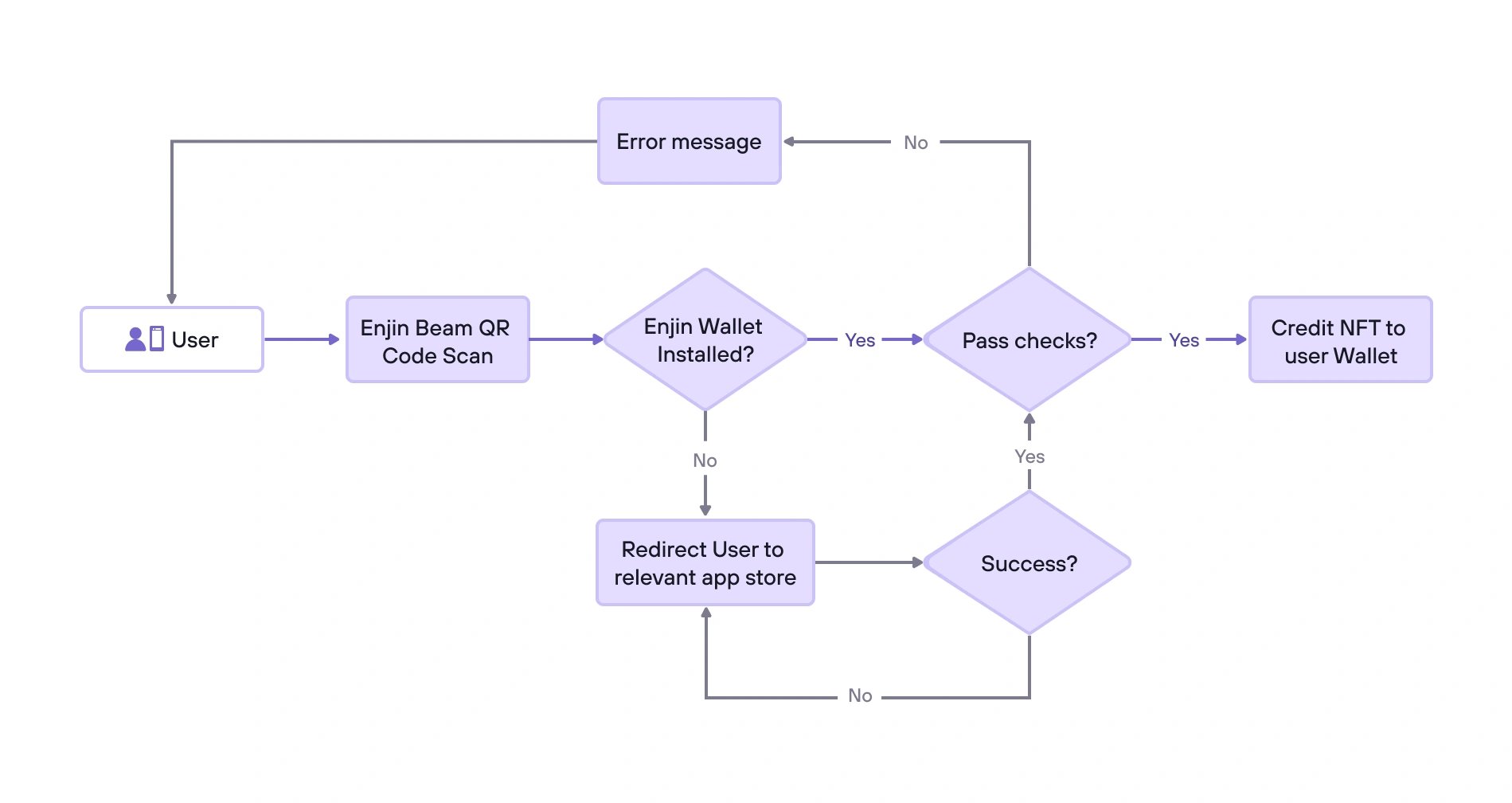
주문형 민팅
Enjin Beam의 주문형 민팅(Mint on Demand) 기능을 사용하면 토큰을 미리 민팅(pre-minting)할 필요가 없어지므로, 사용자의 지갑에 토큰을 청구하는 시점에 직접 민팅할 수 있습니다. 이는 기존의 미리 민팅(pre-minting) 방식에 비해 토큰이 도착하는 대기 시간을 단축합니다. [10]

일괄 발행 및 전송
Enjin Beam은 일괄 발행 및 전송 기능을 포함하여 여러 토큰을 단일 트랜잭션으로 발행하거나 전송할 수 있습니다. 이러한 접근 방식은 활동이 많은 동안 시스템 부하를 줄이고 사용자가 더 빠르고 저렴한 비용으로 토큰을 청구할 수 있도록 합니다. [10]
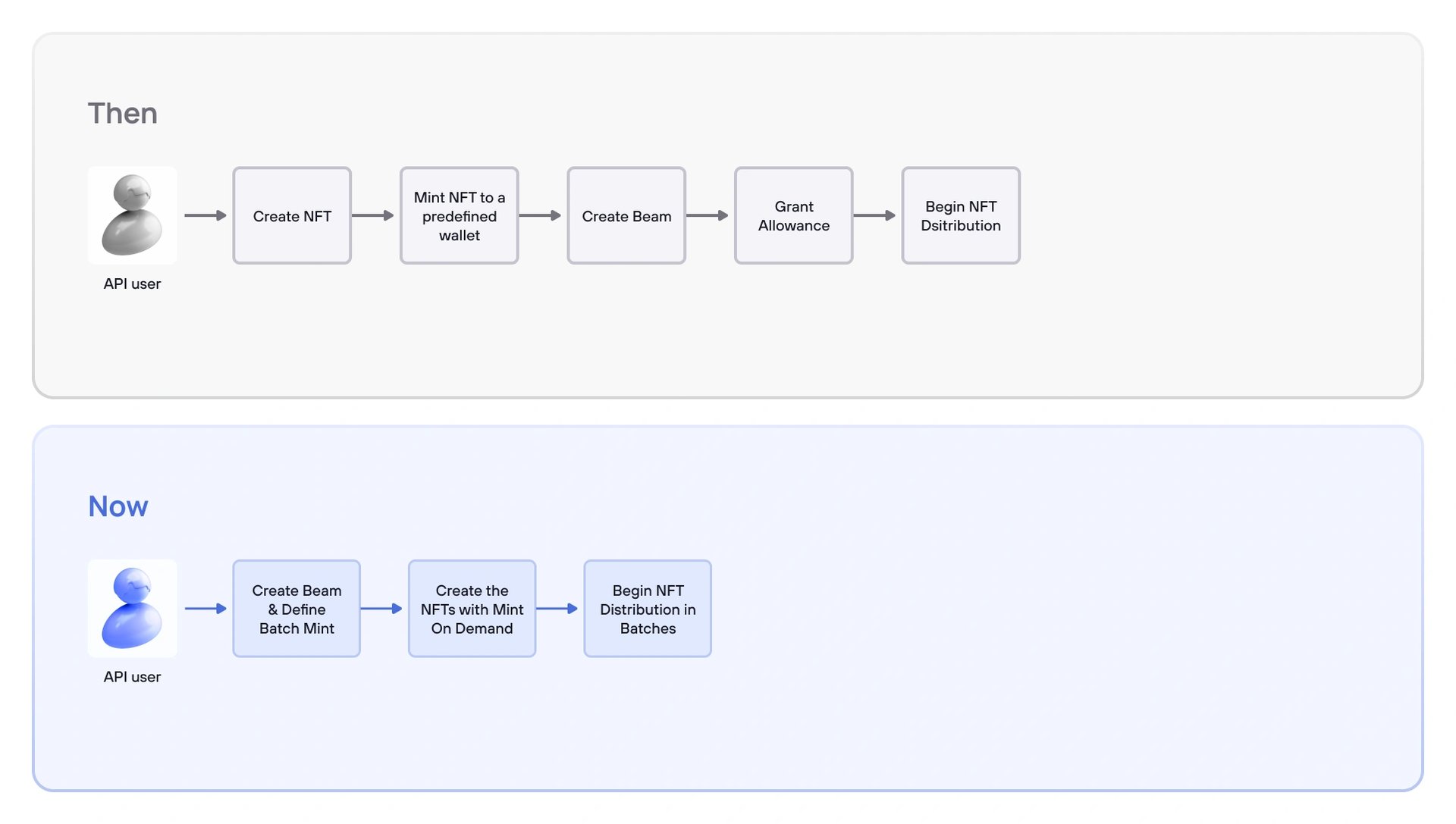
정수 범위 형식
정수 범위 형식은 약식 형식을 사용하여 토큰 ID의 순차적 범위를 지정할 수 있도록 하여 Beam 생성을 단순화하는 새로운 기능입니다. 각 토큰 ID를 개별적으로 나열하는 대신 사용자는 "[startId..endId]" 형식의 범위를 제공할 수 있습니다. 단일 ID와 범위를 결합할 수도 있습니다. [10]

속성 설정
개발자는 이제 고유 및 계산된 메타데이터를 포함하여 초기 토큰 발행 시 온체인에서 토큰 속성을 설정할 수 있습니다. 이 기능은 주문형 발행 기능과 잘 작동하여 게임 개발자가 빔이 생성될 때 토큰을 생성하고 메타데이터를 설정하여 새로운 토큰에 대한 수요 증가에 대응할 수 있도록 합니다. [10]
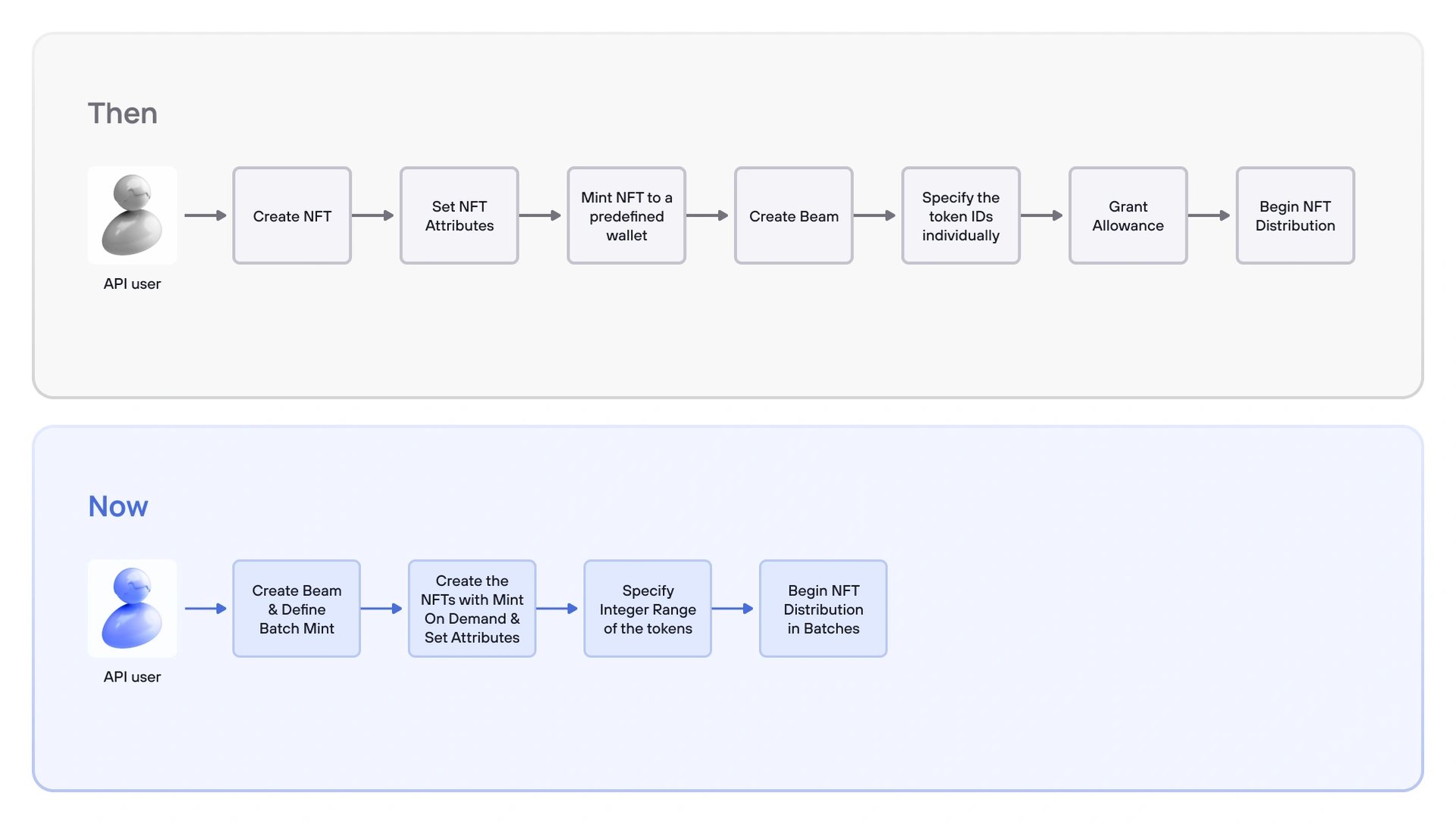
ENJ Coin
Enjin Coin (ENJ)는 Enjin 블록체인(Beullo-kchein)의 기본 통화로, 거래, 수수료 지불, 스테이킹(seuteiking)을 통한 거버넌스 참여에 필수적입니다. 이 블록체인은 ENJ 보유자가 변경 사항을 제안하고 투표할 수 있는 분산형 거버넌스 모델을 채택하여 포괄적인 의사 결정 과정을 보장합니다. 2023년 7월 1일부터 블록체인(Beullo-kchein)은 완전한 거버넌스 지원과 슈퍼 유저 접근 없이 출시되어 투명성과 공정성을 유지하고 있습니다. ENJ는 또한 생태계 내에서 교환 수단 역할을 하고 커뮤니티 참여에 대한 보상을 제공합니다. 지갑(ji-gap)과 NFT(en-e-e-pi-teu) 마켓플레이스와 같은 엔진 제품과 통합된 블록체인(Beullo-kchein)은 지명된 지분 증명(ji-bun jeung-myeong) 메커니즘으로 보안을 제공하면서 포괄성, 상호 운용성, 확장성 및 규제 준수를 강조합니다. 스테이킹(seuteiking) ENJ는 엔진 지갑의 사용자 친화적인 인터페이스를 통해 용이하게 이루어집니다. [11]
2024년 5월 31일 기준으로 초기 거버넌스 보상의 50% 해제와 생태계 풀의 완전 해제 이후 메인넷(meinnet) ENJ의 88%가 해제되었습니다. 2024년 10월 15일까지 초기 거버넌스 보상의 완전 해제와 함께 메인넷(meinnet) ENJ의 96%가 해제될 것으로 예상됩니다. Enjin 블록체인(Beullo-kchein)은 2024년 10월까지 지속적인 거버넌스 보상 분배 및 소규모 커뮤니티 풀에 연결된 나머지 7%를 제외하고 거의 완전히 해제된 토큰 공급으로 운영됩니다. 2024년 6월 7일 기준으로 Subscan 데이터에 따르면 총 공급량의 거의 20%가 거버넌스를 위해 스테이킹되었습니다. [14]
토큰 경제학
ENJ는 총 18억 개의 토큰 공급량을 가지고 있으며, 다음과 같이 분배됩니다: [12]
- 프리세일: 40%
- 크라우드세일: 40%
- 커뮤니티: 10%
- 팀 및 자문위원: 10%
파트너십
- 삼성 녹스 (Samsung Knox)
- 뉴욕 컬처 클럽 (New York Culture Club)
- 사이보그의 퀘스트 (Cyborg’s Quest)
- Boonance.US
- Binance Collectibles
- 평행 세계 (Parallel Worlds)
- 이더리움 재단 (Ethereum Foundation)
- HapiHeros
- 아타리 플루리폼 (Atari Pluriform)
- R.I.P. 2020
- 체인질리 (Changelly)
- 위홉 NFT (WeHop NFT)
- ENJ 빔 클럽 (ENJ Beam Club)
- 서브스캔 (Subscan)
- 사이버크루 (CyberCrew)
- 스톤스 럭셔리 (Stones Luxury)
- 뷰티 인 더 스트리츠 (Beauty in the Streets)
잘못된 내용이 있나요?
